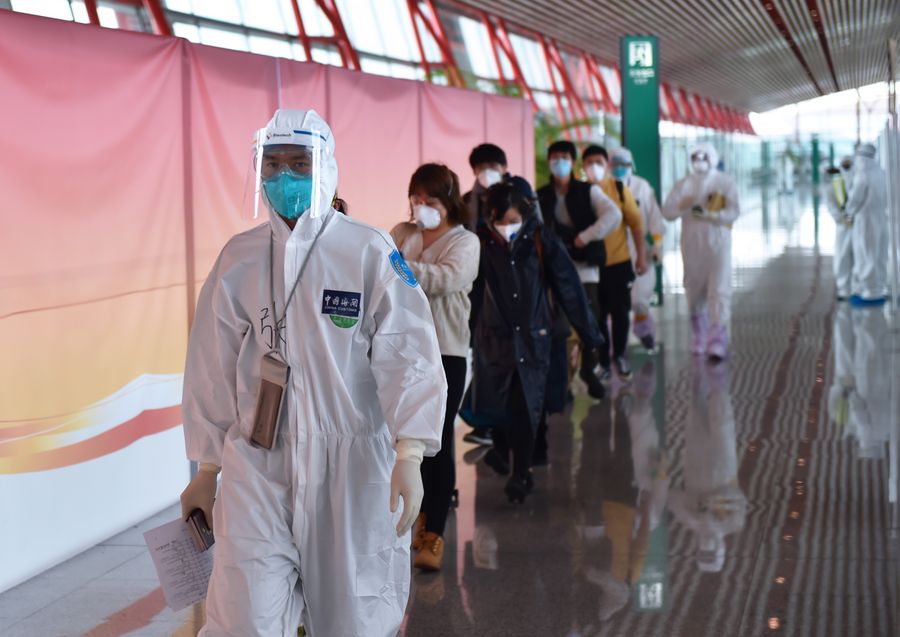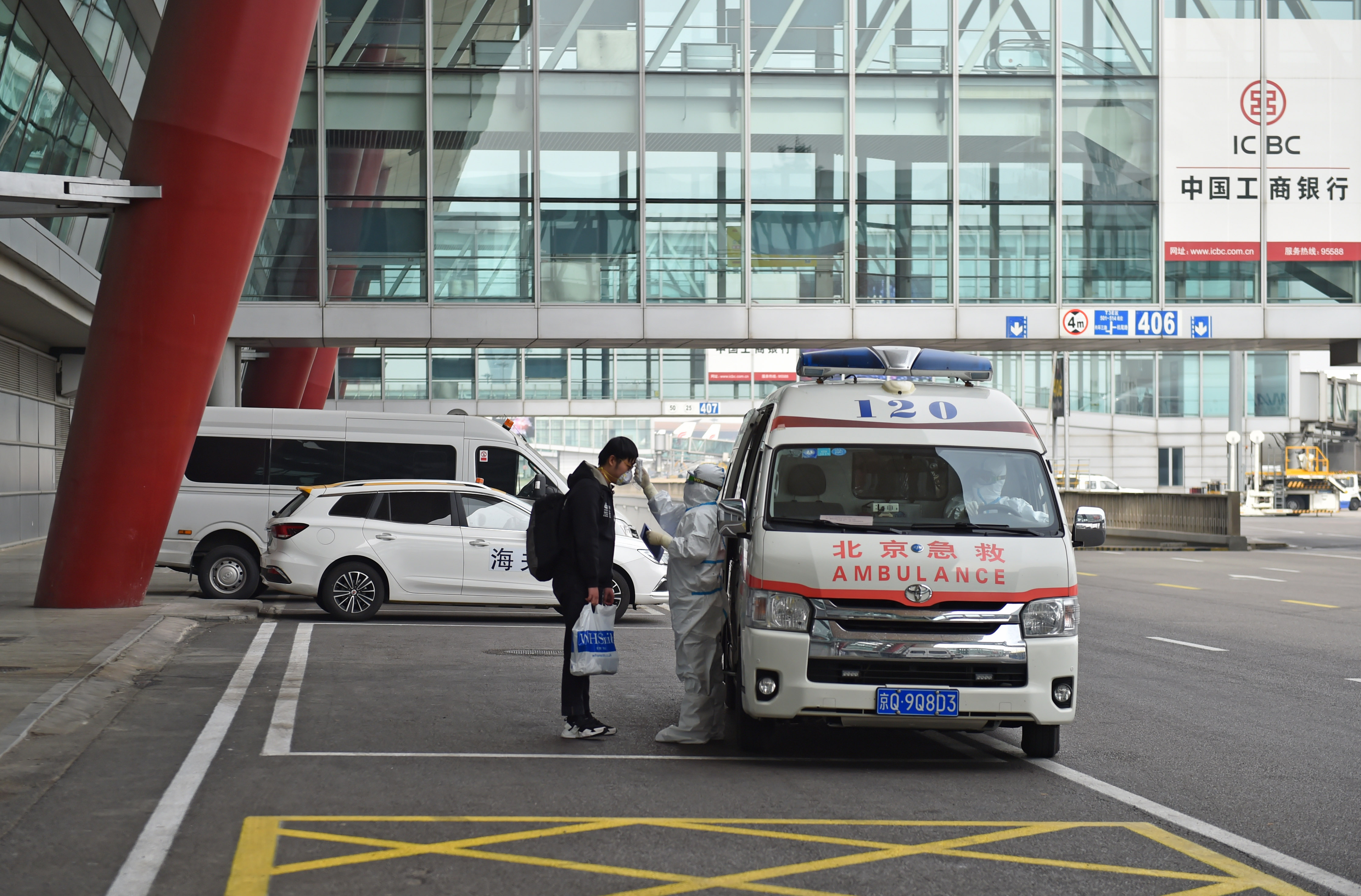
Customs officers lead inbound passengers to enter terminal building of the Capital International Airport in Beijing, March 18, 2020. (Xinhua/Chen Zhonghao)
While most parts of China have been categorized as "low-risk" for COVID-19, the country is facing a mounting risk posed by soaring cases overseas.
BEIJING, March 23 (Xinhua) -- China has scaled up measures at its customs to buck the rising trend of imported coronavirus disease (COVID-19) cases, as the number has reached 353.
This came as most parts of China have been categorized as "low-risk" for an outbreak and Wuhan, the hardest-hit city, marked its fifth day in a row of zero new cases.
But the country faces a mounting risk posed by soaring cases overseas.
"China has prioritized the prevention of imported cases and taken targeted measures to curb cross-border COVID-19 transmission," said Song Yueqian, an official with the General Administration of Customs, Monday.
He told a press conference that quarantine measures at the customs have been strengthened. People who are confirmed or suspected of contracting the virus, their close contacts and those who have tell-tale symptoms such as fever, will be sent to medical or quarantine facilities.
BEIJING "MAIN BATTLEFIELD"
Big cities such as Beijing and Guangzhou have ordered travelers from overseas to be quarantined for 14 days.
And Beijing moved a step forward Monday.
All arriving international flights were ordered to first land in 12 nearby cities, including Tianjin and Hohhot, where passengers must be cleared of COVID-19 before they can travel to Beijing on the same flight.
Sun Shaohua, an official with the Civil Aviation Administration of China, said the move will help stem the inflow of cases to Beijing, which has become the country's "main battlefield" for such cases.
Each week, nearly 200 international flights connected Beijing with cities in 33 countries, including the United States, the Republic of Korea, France, Germany and Spain, bringing "unprecedented" risks to the airports in the Chinese capital, Sun said.
Liu Haitao, an official with the National Immigration Administration, cautioned foreign travelers that transiting through Beijing during the epidemic would take extra time.

Inbound passengers with abnormal conditions are transferred by an ambulance to the designated medical center for further examination, at the Capital International Airport in Beijing, March 18, 2020. (Xinhua/Chen Zhonghao)
QUARANTINE FOR SEAFARERS
On sea travel, China's guideline on the COVID-19 prevention and control has been adopted by the International Maritime Organization for the international shipping industry.
The guideline covered crew protection, emergency response and case reporting, Yang Xinzhai, a Ministry of Transport official, said at the press conference.
Yang estimated that around 10,000 Chinese sailors might see their contracts expire and return to shore by the end of May.
Seafarers who sailed for more than 14 days and show no symptoms will be allowed to go, but those whose voyage time is less than 14 days will need to be quarantined for further observation, Yang said.
ENTRY BAN FOR FLOUTING IMMIGRATION FORMS
The immigration authorities, in the meantime, said arriving foreigners must accurately fill in immigration forms, detailing their destinations and contact persons in China.
"Those who fail to meet entry requirements, or do not answer inquires and report information according to facts, are not allowed to enter China," said Liu, the immigration official.
He said the immigration authorities have shared nearly 200,000 pieces of entry and exit information with the customs and health administrations and helped find more than 100 imported COVID-19 cases.
The findings accounted for one-third of the total imported COVID-19 patients in China, Liu said. ■



